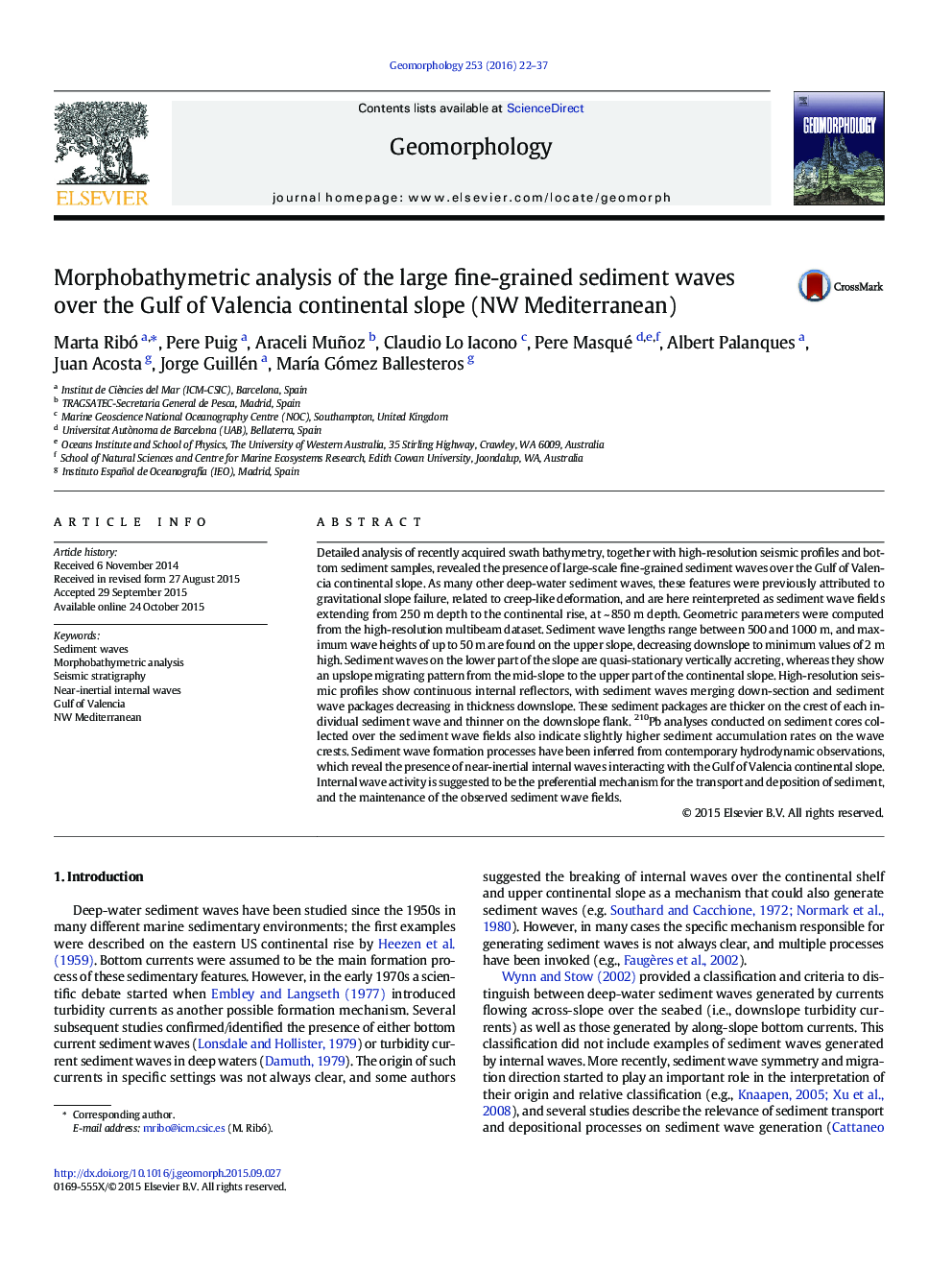| Article ID | Journal | Published Year | Pages | File Type |
|---|---|---|---|---|
| 6431671 | Geomorphology | 2016 | 16 Pages |
â¢Large sediment waves are developed over the Gulf of Valencia continental slope.â¢Wavelengths of 500-1000 m and maximum wave heights of 50 m are observed.â¢Near-inertial internal waves are proposed as the generation mechanism.â¢The continental slope gradient determines the sediment waves' shape and evolution.
Detailed analysis of recently acquired swath bathymetry, together with high-resolution seismic profiles and bottom sediment samples, revealed the presence of large-scale fine-grained sediment waves over the Gulf of Valencia continental slope. As many other deep-water sediment waves, these features were previously attributed to gravitational slope failure, related to creep-like deformation, and are here reinterpreted as sediment wave fields extending from 250Â m depth to the continental rise, at ~Â 850Â m depth. Geometric parameters were computed from the high-resolution multibeam dataset. Sediment wave lengths range between 500 and 1000Â m, and maximum wave heights of up to 50Â m are found on the upper slope, decreasing downslope to minimum values of 2Â m high. Sediment waves on the lower part of the slope are quasi-stationary vertically accreting, whereas they show an upslope migrating pattern from the mid-slope to the upper part of the continental slope. High-resolution seismic profiles show continuous internal reflectors, with sediment waves merging down-section and sediment wave packages decreasing in thickness downslope. These sediment packages are thicker on the crest of each individual sediment wave and thinner on the downslope flank. 210Pb analyses conducted on sediment cores collected over the sediment wave fields also indicate slightly higher sediment accumulation rates on the wave crests. Sediment wave formation processes have been inferred from contemporary hydrodynamic observations, which reveal the presence of near-inertial internal waves interacting with the Gulf of Valencia continental slope. Internal wave activity is suggested to be the preferential mechanism for the transport and deposition of sediment, and the maintenance of the observed sediment wave fields.
